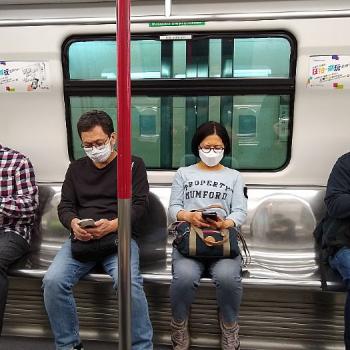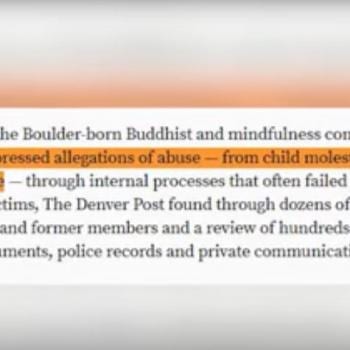There is an old zen story that I’ll happily pass on (albeit perhaps in a disfigured form) for you:
A monk is wandering in China and comes across a royal caravan. The king, seeing the monk, stops the caravan in order to question him.
“Who is your teacher?” asks the king from his carriage.
“My teacher is Gautama, the Awakened One,” replies the monk without looking up.
“What is his teaching?” asks the king.
“Cease to do evil. Cultivate good. Purify the mind,” says the monk.
“This teaching is simple!” says the king, with a laugh.
“Simple enough for a child of 8 to understand it. But so difficult that rarely can a man of 80 practice (or master) it,” replies the monk, looking up at the king.
Today, when many of us live the lives of kings, the big business is happiness. Now that we have it all, how can we be happy?
Or, perhaps more interesting: Why, in an age of such plenty (for the majority in developed countries), are so many of us so miserable?
If a monk told you that your unhappiness was due to your poor ethics, lack of concern for others, and chaotic mindstream, what would you do?
One of my interests that I have been unable to indulge lately is experimental ethics, where real-life experiments are used to demonstrate how and why humans act morally, or don’t. One of the experiments I do recall, time and again, goes as follows:
John Darley and Daniel Batson discovered that Princeton seminary students, even those who had just been reflecting on the Gospel account of the Good Samaritan, were much less likely to stop to help someone “slumped in a doorway, apparently in some sort of distress” if they’d been told that they were late for an appointment. (from here, a pdf)
Though we are not necessarily slaves to our passions, we can be slaves to our circumstances. Horrible circumstances can turn good people into monsters.
So we are responsible not only for how we act, but for the circumstances we put ourselves in. And, as any thoughtful person will see, we are also responsible for the circumstances we put others in. If we put people in positions in which they are almost certain to become violent, then who is to blame? We are, of course. Now, in horrible situations, for instance where companies or governments are systematically destroying environments or human lives (or both), there are often people willing to shout, “Stop! This is wrong!” They are known as whistle-blowers and are rare – for a reason. And the reason is not that human nature is bad or anything like that, but rather that horrible situations ‘twist’ morality for people involved in them, perhaps in the way that black holes twist time and space (for you science geeks).
One way for many of us to get space from the literal warping of moral-space-time is through meditation. This is just one part of the Buddhist path, but it’s important. It’s a skill to be developed, much like muscular abilities, but it brings happiness. Just watch:
That said, it has been a long time since I have formally meditated. I like to say that meditation builds a sort of momentum, and that I’ll get back to it soon, but for now there are those other activities that bring my mindfulness to the moment. And for me the greatest is, generally, photography.
In photography one does, in a way, cease doing all evil. And also, in a way, purifies the mind. I imagine that this is similar to other art forms, such as music or painting, and I also imagine that it is something understandable only to those who have cultivated one of these arts in his/her own life.
But importantly, photography and other arts do little in the way of cultivating the good – the centerpiece of Buddhist practice. This is why I am skeptical of anyone who teaches an artform ‘as meditation’. Meditation is meditation. Or better, cultivation is cultivation. You can’t substitute it with what makes you happy, as if that will replace the effects that proper cultivation brings about. You can, and should, still enjoy your art-form. But just realize that there is more to finding happiness, or realization…
And with that – a few photos and a time lapse (all from Clifton, Bristol, the same area as my last batch of photos):
As with my last time lapse, be sure to adjust to 1080 HD, supposing that your computer screen has roughly that many pixels, or at least 720 HD. It is again shot on a Nikon D90 with the 8mm Rokinon Fisheye lens using the free DCamCapture software and (also free) Picasa to create the video (and also free) Windows Live Movie Maker to add the captions.















